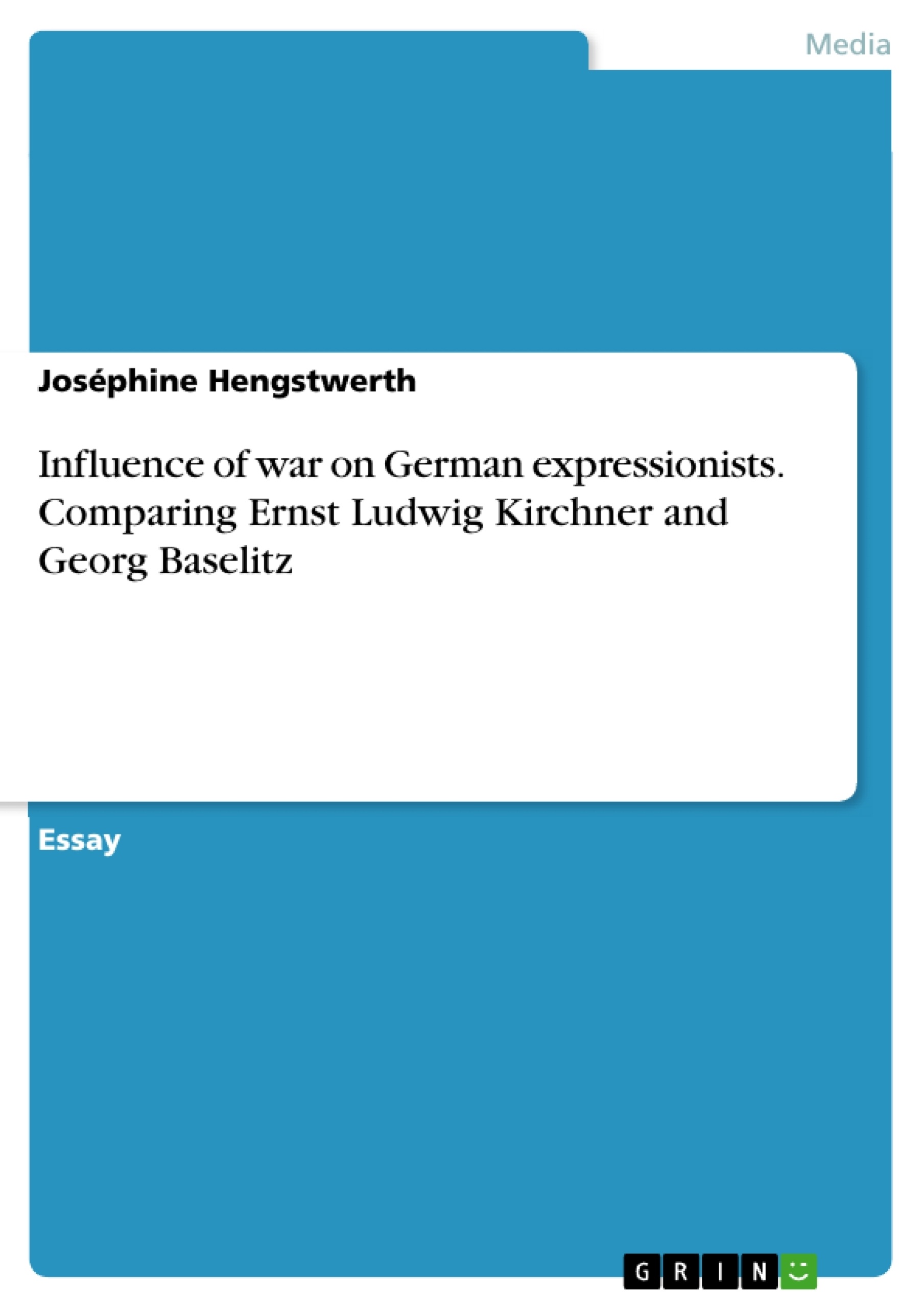“German art seldom has been easy. It is often reminded with its nation’s history, sometimes expressing its glory, but just as often decrying its tumult and suffering.” (Homburg, 2003).
In times of war a nation or the whole world is brought into chaos and uncertainty. Throughout the past hundred years our world has suffered many conflicts and tensions - including the first and second world war (1914–1918; 1939-1945) and the cold war (1947–1991).
In times of war artists feel a great need to respond in their own way. Throughout history there have been many different ways of making art during war. For instance, Liberty Leading the People by Eugene Delacroix from 1830 is one example of a war painting from the French Revolution. With the female personification of liberty walking over dead bodies and holding up the French flag as the main focus, the painting is heroic and triumphant. Other artists use art as a form of propaganda, protest or as a way of expressing their individual feelings in response to war, suffering and destruction. Two German artists, considered expressionist from two different generations experiencing similar forms of devastation, are Ernst Ludwig Kirchner (6 May 1880 – 15 June 1938) and Georg Baselitz (born 23 January 1938). Their role as expressionist artists and the influence of war is the focus of the following discussion.
Inhaltsverzeichnis (Table of Contents)
- INFLUENCE OF WAR ON GERMAN EXPRESSIONISTS
- COMPARING ERNST LUDWIG KIRCHNER AND GEORG BASELITZ
Zielsetzung und Themenschwerpunkte (Objectives and Key Themes)
This text examines the influence of war on the German Expressionist art movement by comparing the works of Ernst Ludwig Kirchner and Georg Baselitz. It explores how these artists responded to the devastation and chaos of war through their art, and how their unique styles reflected their personal experiences and the social and political contexts of their time.
- The role of art as a response to war and its influence on individual artists
- The development of Expressionism as an art movement and its key characteristics
- The impact of war on national identity and individual perspectives
- The use of symbolism and imagery in artistic expression
- The relationship between art and social and political contexts
Zusammenfassung der Kapitel (Chapter Summaries)
- The text begins by introducing the concept of German art as a reflection of its history, often highlighting its triumphs and tragedies. It then examines the influence of war on artists and provides examples of various responses to conflict, from heroic depictions to propaganda and individual expressions of suffering.
- The text focuses on the Expressionist artists Ernst Ludwig Kirchner and Georg Baselitz, discussing their distinct artistic styles and how war impacted their work. It highlights the significance of the Die Brücke group, formed by Kirchner and his fellow artists, and its rejection of academic art in favor of a more spontaneous and symbolic approach.
- Kirchner's experiences during World War I and his famous painting "Self-Portrait as Soldier" are analyzed. The text explores the symbolism behind the amputated hand and the artist's struggle with his identity and artistic ability in the face of war. It also mentions the painting's later appropriation by the Nazis and its significance as a powerful representation of the psychological effects of war.
- The text delves into the life and artistic journey of Georg Baselitz, emphasizing his unique style of painting upside down and his rejection of categorization within established art movements. It explores the controversy surrounding his work, particularly the use of the eagle motif, and how he sought to confront the complexities of German identity and history through his art.
Schlüsselwörter (Keywords)
The key terms and concepts explored in this text include German Expressionism, war art, Ernst Ludwig Kirchner, Georg Baselitz, Die Brücke, "Self-Portrait as Soldier", Neue Wilde, national identity, symbolism, and the impact of war on individual and collective experiences.
- Quote paper
- Joséphine Hengstwerth (Author), 2019, Influence of war on German expressionists. Comparing Ernst Ludwig Kirchner and Georg Baselitz, Munich, GRIN Verlag, https://www.hausarbeiten.de/document/504341


